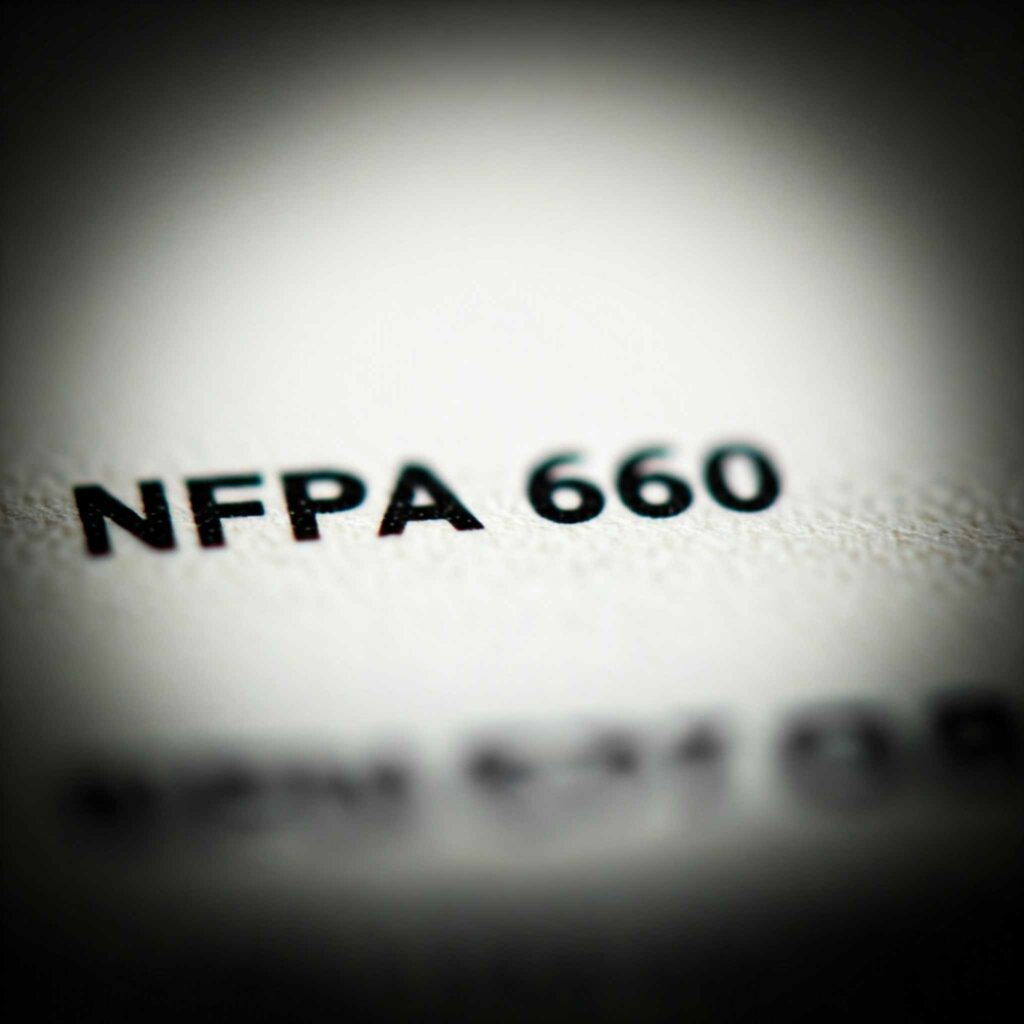Combustible dust has long been a safety concern across industries, with its potential to cause devastating fires and explosions. To address these risks, the National Fire Protection Association (NFPA) has developed NFPA 660, a consolidated standard that provides clear, unified guidance for managing combustible dust hazards.
So, What is NFPA 660?
NFPA 660 is a new, comprehensive standard that merges several existing NFPA standards related to combustible dust. These include NFPA 61 (agricultural dusts), NFPA 484 (combustible metals), NFPA 652 (fundamentals of combustible dust), NFPA 654 (general dust hazards), NFPA 655 (sulfur dusts), and NFPA 664 (wood processing dust). By merging these standards, NFPA 660 offers a streamlined approach to dust safety, eliminating redundancies and ensuring consistency across industries.
This unified standard covers all aspects of combustible dust hazard management, including dust hazard analysis, engineering controls, equipment design, housekeeping, explosion protection, and more.
 Why NFPA 660 on Combustible Dust Matters
Why NFPA 660 on Combustible Dust Matters
The creation of NFPA 660 is a significant step forward for industrial safety. By consolidating multiple standards into a single document, it simplifies compliance for industries that handle combustible dust. As a result, this unified approach ensures that facilities of all types can follow consistent and comprehensive guidelines.
Additionally, NFPA 660 reflects the latest advancements in technology and knowledge regarding combustible dust hazards, ensuring that facilities are equipped with the most effective tools and strategies for managing these risks.
Key Components of NFPA 660
1. Dust Hazard Analysis (DHA):
NFPA 660 emphasizes the importance of performing a Dust Hazard Analysis, a process that helps facilities identify areas where combustible dust presents risks of fire, deflagration, or explosion. This step is critical for developing effective mitigation strategies.
2. Hazard Mitigation Strategies:
The standard provides detailed guidance on engineering controls, such as dust collection systems, explosion venting, and spark detection systems. It also addresses administrative controls, like proper housekeeping practices and employee training.
3. Industry-Specific Considerations:
NFPA 660 recognizes that different industries face unique challenges with combustible dust. By integrating knowledge from the previously separate standards, it ensures that industry-specific hazards—such as those related to wood dust or metal shavings—are addressed effectively.
4. Consistency in Compliance:
A key benefit of NFPA 660 is the elimination of conflicting or redundant requirements across industries. Facilities that previously had to consult multiple standards now have a single, comprehensive document to guide their safety practices.
Who Needs to Comply with NFPA 660?
NFPA 660 applies to any facility where combustible dust is generated, processed, or handled. This includes industries such as agriculture, food processing, metalworking, pharmaceuticals, woodworking, and chemical manufacturing as well as others. Compliance with NFPA 660 is essential not only for meeting regulatory requirements but also for protecting employees, equipment, and the surrounding community from the devastating consequences of dust-related incidents.
How Do I Know If My Dust Is Combustible?
Understanding whether the dust generated in your facility is combustible is a critical step in complying with NFPA 660. Combustible dust is not always obvious, as materials that seem benign in solid form—such as wood, sugar, or metals—can become hazardous when turned into fine particles. The only definitive way to know if your dust is combustible is to have it tested by a certified laboratory. Testing can reveal properties such as ignition sensitivity, combustibility, and explosion potential, enabling you to design effective safety and mitigation strategies tailored to your specific operations.
The Path Forward
NFPA 660 is a game-changer for industrial safety. Its unified approach simplifies compliance, enhances safety, and ensures consistency across industries. By adopting NFPA 660, facilities can certainly mitigate combustible dust risks effectively, fostering a safer work environment for everyone.
If your facility handles combustible dust, now is the time to familiarize yourself with NFPA 660 and ensure your operations are in full compliance with its guidelines.


